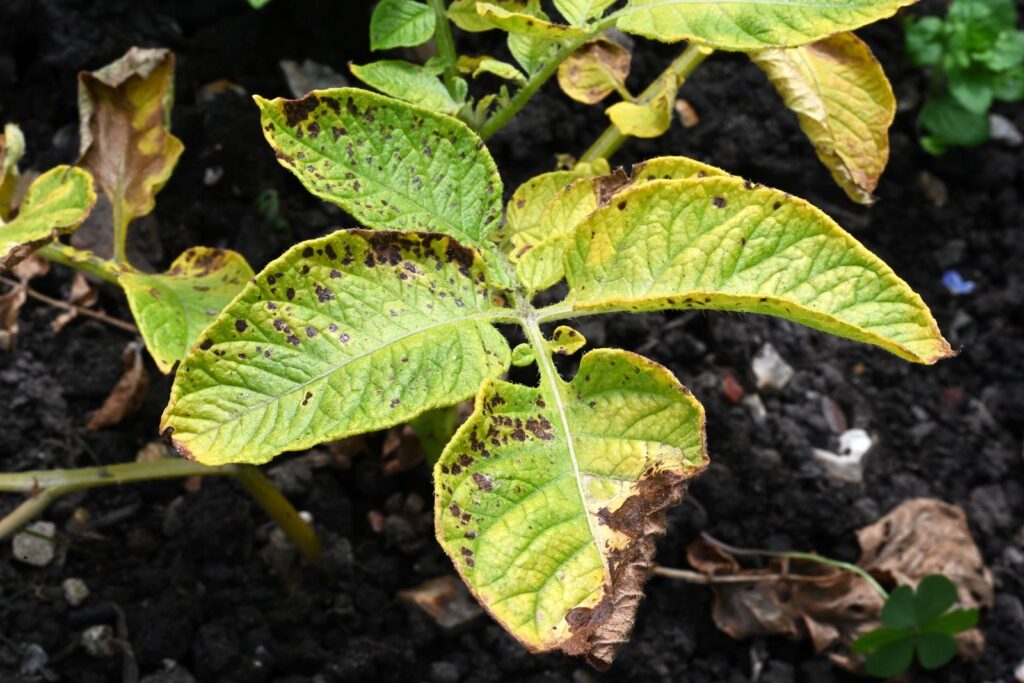Growers advised to mitigate rising Alternaria risk in potatoes
10th July 2023
Arable farmers are being advised to revise their blight strategies now to target Alternaria, as a cold and wet spring followed by weeks of hot and dry weather have made potato crops significantly more susceptible to infection.

Due to erratic weather conditions, potato crops were slow to establish this year in cold, wet seedbeds following a late planting, and have suffered during subsequent periods of damaging heat and light stress.
Compounded by many growers cutting back on fertiliser inputs, these have increased the risk of stresses that make potatoes more susceptible to Alternaria infection, said Syngenta technical manager Andy Cunningham.
Historically, infections have been identified from mid to late July, but have already been reported this season, with instances of serious plant die-back.
Moreover, a reduction in mancozeb availability and less use in extended blight programmes during the dry weather has also enabled Alternaria to gain a foothold in some crops, increasing the risk of spread between fields, Mr Cunningham warned.
“Growers and agronomists should be thinking of including Amphore Plus in their blight strategies now to target Alternaria, possibly one or two sprays earlier in the programme than would be the case in a normal season,” he advised.
Successive years of a Syngenta Alternaria monitoring initiative, with sampling and analysis by NIAB, had highlighted the consistent presence of multiple Alternaria species spores throughout the crop growing cycle.
However, it was consistently the most prolific A. alternata that was identified infecting potato leaves earliest in the season, followed by the larger lesions of A. solani becoming more prevalent later – frequently on the back of damage caused by earlier A. alternata infection.
“That was a really important finding, which was contrary to potato industry thinking at the time,” Mr Cunningham pointed out.
“It reinforced the importance of Amphore Plus early in the alternaria strategy, as it provides the highest possible loading of difenoconazole, that is proven more active on A. alternata than other options, as well as being effective against A. solani.”
“It also means potatoes are getting the blight protection of the full rate of mandipropamid in the same application,” he added.
Later in the season, agronomists can switch to including Amistar in the blight spray programme for Alternaria protection against the later infecting A. solani, he said.
Prevention is key
Mr Cunningham went on to highlight that any fungicide treatment must be applied preventatively for Alternaria. “However, if you catch infection early, or when just a limited number of plants in the crop have been affected, the clean plants can still be effectively protected,” he noted.
He also advocated that managing potato crops to make them more resilient to stress will help better cope with the impact of an Alternaria attack. That could be through mitigating heat stress using Quantis, nutrient stress with fertiliser, or drought stress with irrigation.
“The pressures of stress on potato crops have been increasing year on year, which raises the risk of more significant Alternaria outbreaks.
“Along with increasingly scarce water resources, coupled with the climate patterns of prolonged hot, dry periods, growers could look to a new generation of bioproducts to optimise use of resources and reduce stress on plants, as well as adapting fungicide strategies to incorporate the most effective Alternaria protection,” Mr Cunningham concluded.
